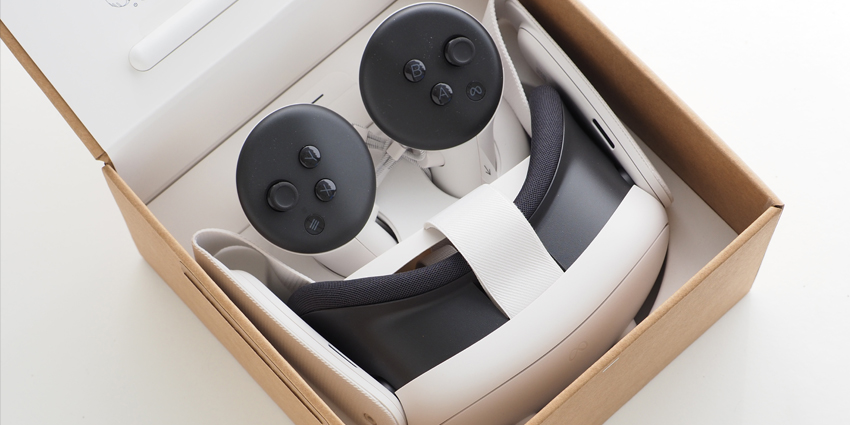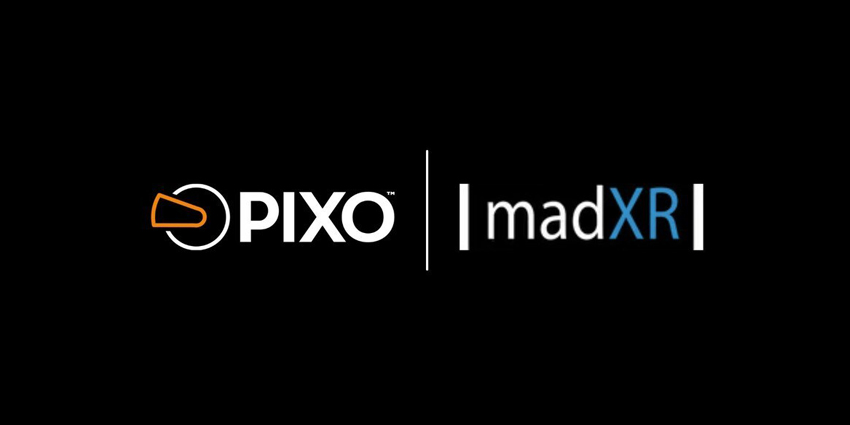Virtual reality (VR) continues to develop in the tech industry. Following the release of several flagship VR headsets, the industry is now moving beyond using the devices for entertainment and into real-world use cases. This will allow many to work in virtual reality, bringing companies closer together across wide physical distances.
The reality is that immersive technologies are transforming all verticals and aspects of life, including the workplace. This creates stronger demand for headsets and fuells the drive for improved performance and form factors.
The VR market has grown exponentially, reaching around $15.81 billion in 2020 alone. Experts have also predicted a compound annual growth rate (CAGR) of roughly 18 percent. A massive portion of this comes from work-related use cases for VR, including training, upskilling, and content creation.
Professional environments can benefit from VR by allowing colleagues to collaborate in the Metaverse. Employees can do this both remotely and in person to boost productivity exponentially.
Here’s a closer look at the role of VR in the workplace.
Sectors Changing the Future of Remote Work
The news comes as many companies leverage VR to design prototypes of new cars. Brands like Jaguar Land Rover, BMW, and Rivian have tapped VR solutions from Varjo to build the cars of tomorrow.
Retailers also leverage VR to view and test products in virtual environments, even before they are built. Firms like EnvisionVR are using VR to showcase off-the-plan apartments to prospective buyers.
The efforts come after the COVID-19 pandemic, which fuelled a massive surge for immersive solutions amid social distancing protocols. Government restrictions also prevented people from shopping, visiting, and meeting in person. This has triggered a wave of VR solutions from ingenious immersive firms.
Organisations such as the XR Association have predicted that XR solutions could help the economy recover post-COVID-19. This would help by rapidly stabilising upskilling challenges with deployable, repetitive training modules.
Sectors Adopting VR Remote Collaboration
- Healthcare: Companies are using VR to train for critical surgeries, streamline patient data, and check vitals with face, hand, and eye-tracking tools. OssoVR and also CWRU’s Microsoft HoloLens 2-based HoloAnatomy and HoloAnatomy Neuro suites are bringing such realities to fruition.
- Real estate: Firms are developing off-the-plan virtual showrooms for global customers. This has streamlined the purchasing process for real estate agents and builders. Companies continue to use them for their properties as an efficient, persistent means to tour real estate, even post-pandemic.
- Architecture, engineering, and construction (AEC): Multiiple AEC firms have tapped VR’s Autodesk VRED and other computer-aided design (CAD) tools. These are used to design accurate digital twins of future and current designs, even creating time-lapsed versions with sensor data.
- Manufacturing: Firms are working in VR to boost quality control of manufacturing by improving safety, monitoring sensory data in real-time, and securing smart facilities with digital twins. Siemens and NVIDIA are buildling the industrial metaverse with such technologies.
- Marketing: Marketing products has never been easier and more engaging than with VR solutions. Nike, Adidas, Timberland, and others are teaming up with metaverse firms such as Epic Games to create communities of product enthusiasts. While there, people can compete for non-fungible tokens (NFTs), view real-time 3D (RT3D) products, and view the latest product releases.
Internal Changes to the Workplace
No longer ties to a single vertical, enterprises can work in virtual reality to reshape their internal operations. Many will begin with the following target use cases:
VR Remote Collaboration
Multiple platforms have surfaced for collaborative tools. Businesses can use these virtual spaces for remote and hybrid working, saving companies millions on travel, real estate, and productivity resources.
The future of work with VR promises to deliver multiple platforms for meeting remote teams to share projects in real-time, conduct presentations and negotiations, and stream events, among others.
Companies such as Virbela, ENGAGE XR, Meta Horizon Workrooms, Arthur, Spatial, and even Autodesk have opened their own platforms for VR collaboration, leading to significant boosts in engagement and flexibility.
Training
VR has also offered massive potential for upskilling and training, where many firms work in virtual reality to engage employees. The efforts come amid the Great Resignation, forcing many enterprises to leverage the technologies to rapidly produce workforces capable of meeting future challenges and tasks.
Results from Oberon Technologies, a leading VR onboarding platform, has shown a fourfold increase in learner retention. This has proved the merit of immersive learning platforms for day-one readiness.
Additionally, Varjo Technologies works with the European Air Safety Agency (EASA) to train pilots with its Aero headset. This now provides pilots with full credit hours using unparalleled realism and simulation for aviation industry experts.
Product Design and Development
Designers are now standardising prototyping workflows with VR and AR headsets. Also, solution providers such as Autodesk, Lenovo, and Varjo are leading in such collaborative tools. With their platforms, professionals can meet in the same virtual space to design vehicles, buildings, and components at scale. Varjo’s Teleport platform can even scan full environments to integrate as virtual meeting spaces.
Boosting the Customer Experience (CX)
Employees can now work in virtual reality, allowing their customer bases to use the technology for client meetings. Companies can now showcase their best products without the need for in-person conferences, events, and meetings.
For example, Jena, Germany-based metaverse company rooom has built a bespoke platform for hosting full-scale events capable of rivalling major showroom gatherings. This saves exponential costs for travelling, hosting products, and demos to protect company assets.
Additionally, firms such as NexTech AR and Avataar have also developed a massive product catalogue of augmented reality (AR) assets for firms to engage clients.
These can provide potential buyers with 1:1 scale product demos and even in-person try-ons. This is across product verticals such as clothing, furniture, or even aircraft parts.
Recruiting
Moving forward, recruitment processes have also turned to VR to upskill and continue education for employees, citing ongoing turnover challenges from current workforces.
Trainees and potential hires can meet with human resource (HR) departments for virtual interviews. This is complete with real-time metrics and behavioural analysis.
Similarly, companies such as CORTEXR and Moth and Flame have tailored their solution for enterprises seeking to empower employees with vital skills for the workplace.
The future of work with VR thrives with such innovative solutions. Employers can now vet candidates with artificial intelligence (AI) and behavioural analysis tools.
VR Will Transform the Future of Remote Work
To date, the digitally-transformed enterprise aims to secure the future of enterprises by pushing the boundaries of what’s possible. Industries undergoing their own transformations are learning the future of work is secure with VR technologies. Whether businesses want to improve collaboration with team members or streamline processes, VR empowers them to do so with measurable successes.







